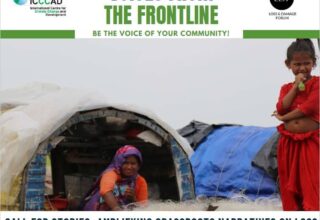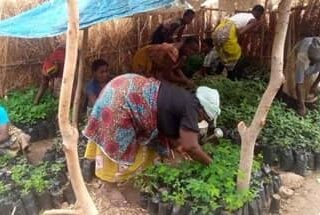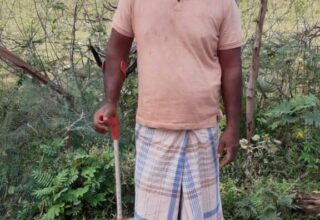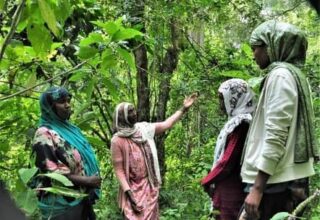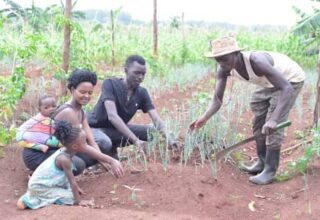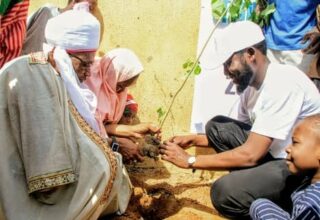In the Kajiado County, Kenya, we meet Lucy Lemashisha who coordinates women community empowerment activities to save her Maasai community from marginalization and improve food security. This is the fourth of the ‘Voices from the Frontline (Phase-II)‘ stories by ICCCAD and GRP.
Kenya lies along the equator and is the largest economy of the Eastern and Central Africa region. Nomadic pastoralists, who move from place to place in search of pasture for their livestock, inhabit the hot and dry plains of the lower Eastern plateau and the Northern rangelands. “Over the last three decades, the expansive territory representing more than two thirds of the country’s surface area has experienced a cyclic pattern of drought and famine,” says Ms. Lucy Lemashisha. Lucy paints a picture of resilience during her interview. She has lived in Kajiado County for the last 55 years, and she has seen it all. She has seen as the landscape evolved from plains rich in pastures for the indigenous breed of Maasai cattle to a desolate dry and dusty plains, which have become the hallmark of reality each successive year.
The plights of Maasai Community struck with drought and famine
The communities living in Kajiado County have felt the brunt of drought and famine, posing a real threat to their livelihoods. The Maasai, an ethnic minority community, have historically depended on livestock as a source of livelihood. Men own the livestock, and women and children are allowed to sell milk and manure to make a small income. When herds of livestock are decimated each year by drought and famine, the community suffers Women and children are the most affected by this because they have nothing to fall back. The men relocate the animals to look for grazing fields, leaving the women and children with nothing at their disposal to make an income. Losing livestock also has an implication on health, food security and nutrition in the community. In addition, when men leave with cattle to search for pasture, the availability of milk for household nutrition is further compromised.
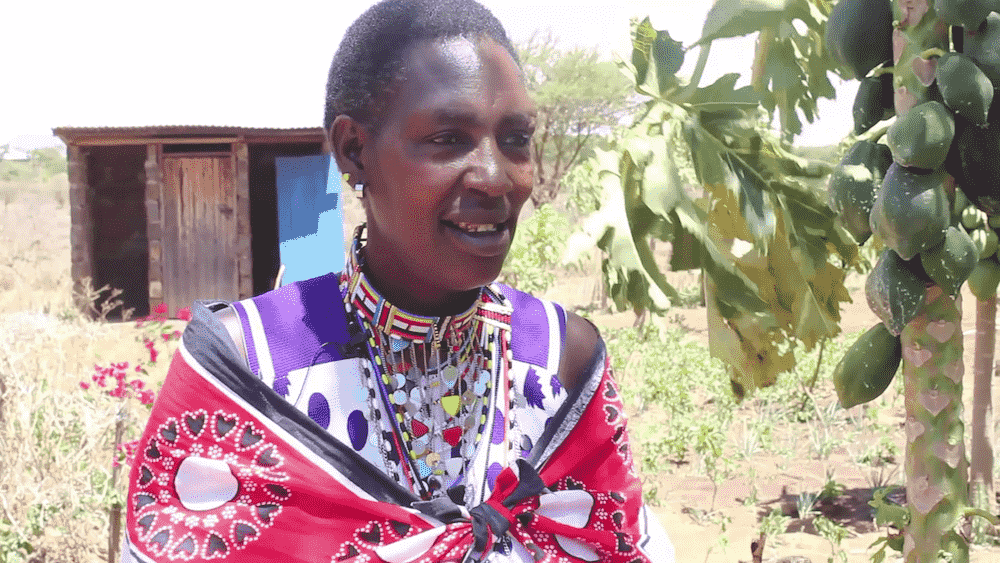
Statistics have revealed that Kajiado County has the highest percentage of children suffering from malnutrition. The region used to receive some rainfall in April and June and some precipitation in the cold month of July. But now rainfall is erratic. Recurrent drought has also driven wildlife from the neighboring national parks into pastures inhabited by the Maasai Community. This has led to human-wildlife conflicts resulting in injury and death.
The Climate Resilience and Learning Center – A beacon of livelihood support
The urgent need for household food and nutritional security led a group of women to mobilize themselves into the community-driven ‘Climate Resilience and Learning Center’. In 2014, Lucy mobilized three women’s groups, Kaseri Olera, OLokirdingai and Najire to explore alternative livelihoods. The women came together and decided to improve their manyattas (Maasai traditional huts) and exchange livelihood ideas. They improved their manyattas by replacing the grass roofs with iron sheets that can be used for rainwater harvesting. In the wake of prolonged and repeated drought more women joined the groups.
The women share their knowledge and skills on small scale (crop, indigenous chicken and small stock) farming, beekeeping, and climate smart and conservation agriculture practices. They also improved their beadwork to sell locally and to tourist destinations.
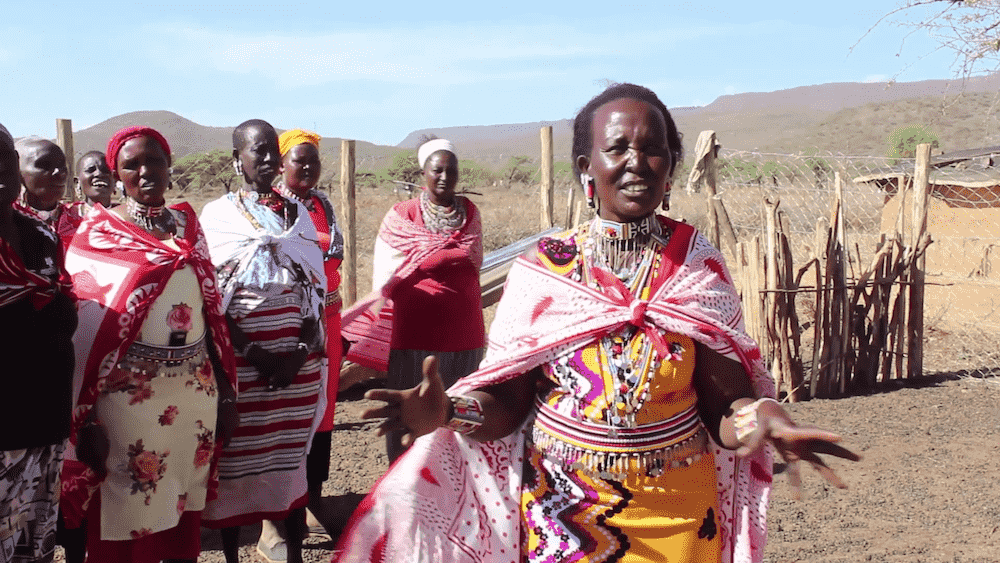
The women’s groups hold regular meetings at the home of Lucy Lemashisha. The Rural Women Network (RWN), is an inclusive platform of women which aims to empower the grassroots, rural women smallholder agricultural producers in Kenya. The group received funding from a joint initiative by Global Resilience Partnership (GRP), Climate Justice Resilience Fund (CJRF) and International Centre for Climate Change and Development (ICCCAD), which supported the women’s groups to establish the center. The center is working towards building capacity of communities to adapt to climate change through community driven and locally adapted food production. Their Trainers of Farmers (ToFs) training program promotes ownership of solutions, and the formation, mobilization and strengthening of social groups.
Led and owned by local women
The center is run by a management committee of eight women leaders from the eight women’s groups. “The need for the center could not have waited, that is why I set aside a small plot on my land for practical learning through demonstration”, explained Lucy. The center has attracted stakeholders who have supported them with training and technology.
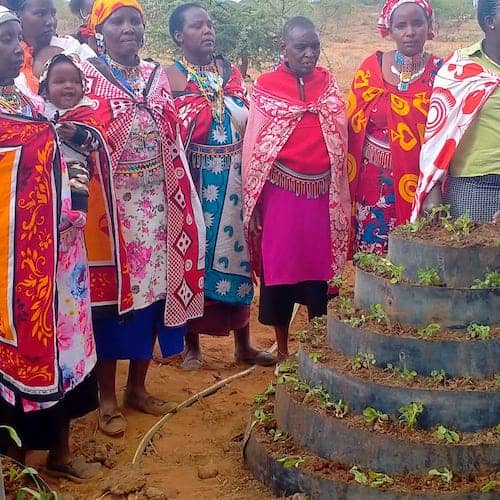
Although the Center does not have a dedicated source of funding, it has great potential for impact. It has trained 560 women from the eight women’s groups who have been progressively replicating their skills at their individual households. Other groups and households outside the eight groups have also been accessing the center. This has given the local women ownership of the initiative. Other stakeholders use on the center’s Trainers of Farmers (ToF) model to reach out to more communities, which demonstrates the potential for replication and scaling up.
Resetting power dynamics
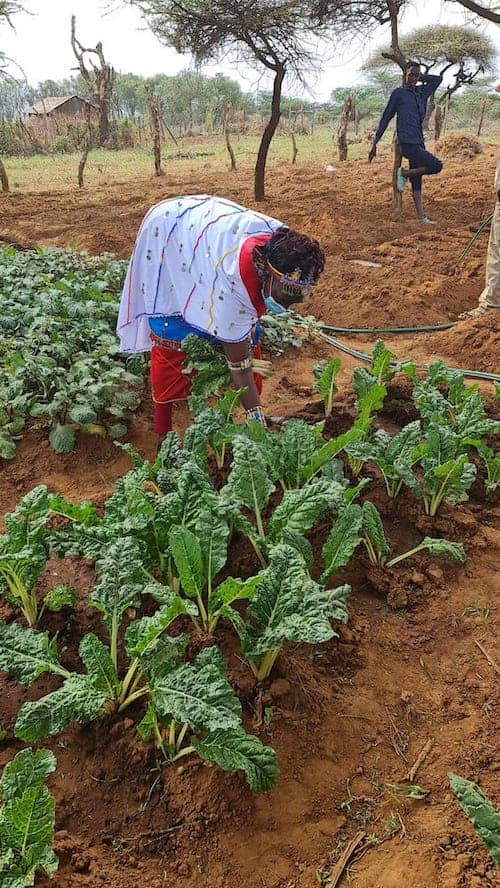
The initiative has reset the power dynamics in a historically patriarchal society with the women taking up leadership roles and some appointed positions within county government tas
k committees e.g. climate justice committee, Anti-Female Genital Mutilation committees. The learning center has made women an important cog in information, knowledge and experience sharing in a society that has traditionally had low or no regard to women.
This initiative is locally-initiated and locally-led. It provides food, nutrition and alternative sources of income to community members. As the women’s group continues to evolve more opportunities for locally-led adaptation initiatives arise.
The RWN has mobilized the women to strengthen their food and nutrition security, which in turn has led climate resilience. It has also provided beneficial linkages with other actors to support the initiative.
The women’s groups have faced several barriers along the way. Lack of funding to sustain expert engagement and center development hinders scaling up and introducing more innovations. Scaling the local solutions at individual household level and within the community will also take time and determination. The literacy level in the community is very low and with most of the available information written in English, there is need to translate written material into the local language. The public sector extension and advisory services have not been available when they were needed to support the Trainers of Farmers and local adaptation activities. Replication of the center is needed to reach more members of the community and decrease the distances to the center.
Opportunities to increase community resilience
Opportunities to enhance the community resilience in Kajido County are multiple. The innovative solutions being promoted are easy for the local community to embrace, and they present the benefits of household food and nutrition security. The availability of land and willingness to try out locally-led climate adaptive solutions shows the community’s determination. The growing acceptance by men that women can participate and lead in decision making of locally-led adaptation practices puts the community on a firm path towards woman, locally-led climate adaptation. The community has an opportunity to adapt local solutions towards resilience.
Lesson for local communities
“The community adaptation innovations and management practices would benefit immensely from support from government agencies, non-governmental organizations (NGOs) and other private sector agencies. This support would aid the development and scaling up of locally adapted climate resilient agricultural practices through on-farm and off-farm capacity building activities”, says Lucy.
There are many important lessons that can be drawn from the initiative. Start small with the willing local communities to pilot solutions and adopt solutions that directly support livelihoods at individual household levels. Community organizations and social groups provide entry points for promoting structured locally suited climate adaptive solutions/processes. Local communities are better placed to decide what innovations and management practices suits them best in their efforts to respond to climate change. Sharing information and knowledge through participatory, practical learning is a critical facilitator to climate adaptation.
Interviewers’ Perspective
Grassroots women are not only storytellers but experts in their own fields. Their expertise is usually clouded by technical jargons like beneficiaries, targets, recipient etc. Despite this challenge, they are the ones who lead action on the ground. Lucy Lemashisha tells it all in this story. Like other women she has lived in this region for over 50 years. She is the face of resilience. Like Lucy most of the grassroots rural women agricultural producers have created coping mechanisms, adopted locally-led adaptation practices like climate smart and conservation agriculture. Let us support the grassroots women to unleash their potential. They are the ones who should lead and shape actions on climate change because change is local!
About the interviewers
Charles Mbuthia Kamangu is an expert in Organizational Development and Institutional Development (ID/OS) with nearly 20 years’ experience in the development world. He holds a bachelor’s degree in development studies with other skills training covering community development and social work, cooperative development, project cycle management, and monitoring and evaluation among others. He has a long experience in development project planning, implementation, monitoring, evaluation, knowledge management and reporting.
Pauline Kariuki is the Executive Director of the Rural Women Network (RWN). She is a Community Development and Social worker expert with experience spanning over 15 years. She has worked with various rural and urban development projects in Kenya including climate justice and gender-based programmes at the national and regional level.
About Lucy Lemashisha
Ms. Lucy Lemashisha is a seasoned community leader who defied all odds and broke away from the centuries’ old culture of nomadic pastoralism and settled to try alternative livelihood methods. She coordinates women community empowerment activities with passion with an objective to save her Maasai community from marginalization and food security. She is a champion in climate justice activities and a warrior who is fighting the cultural gender-based violence (GBV) including female genital mutilation (FGM) in her community.

